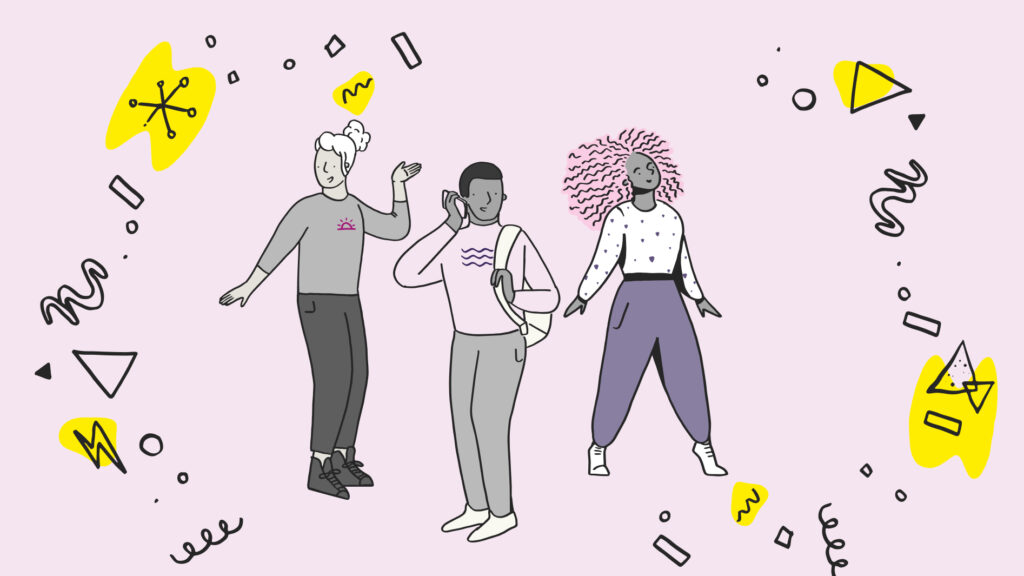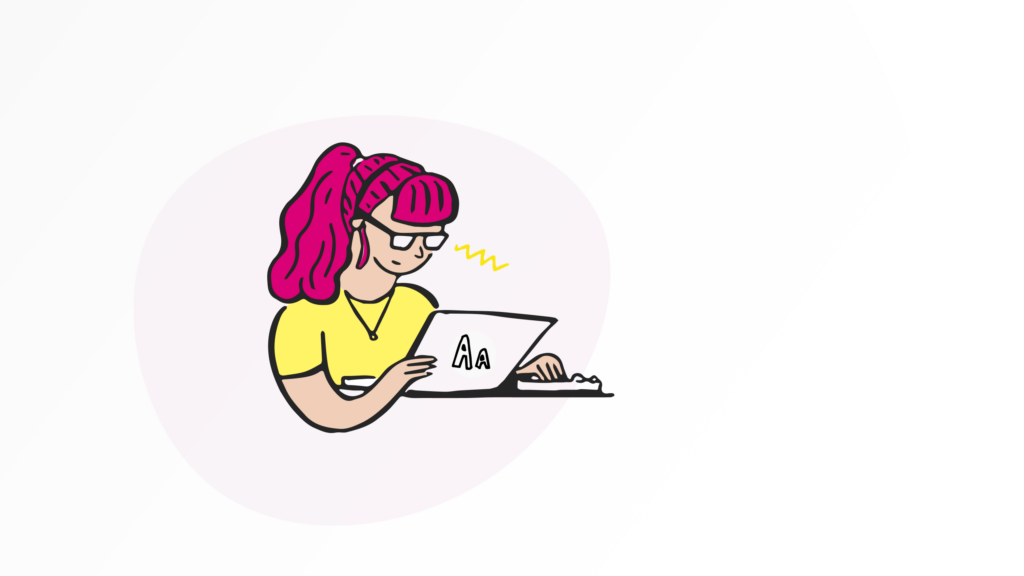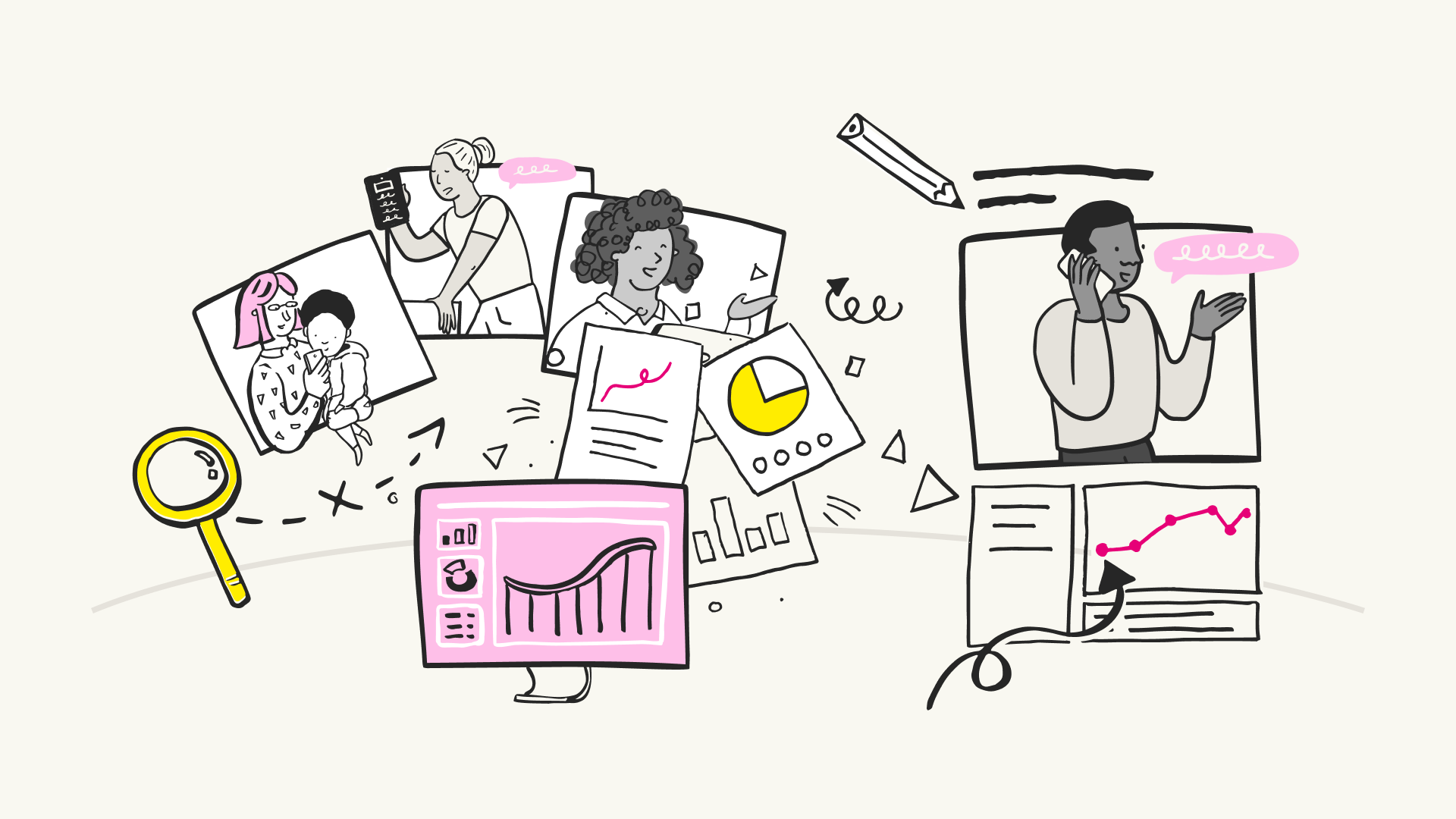
What is a UX persona?
Personas within the context of UX are characters that represent a typical example of users of a product or service. They are a tool to help guide the design process and generate empathy by bringing to life the needs, ambitions, goals, and behaviours of different user segments.
A meaningful persona should be built on evidence and data collected from research methods like user interviews, surveys, ethnographic research, or SEO analysis. This means that a good persona takes time to put together in a way that can be easily understood. It should be well designed and considered so that practitioners, stakeholders and wider organisations can take actionable steps forward.
Personas provide a contextual narrative for your product or service. We can begin to understand the user’s journey through their needs, frustrations and perceived solutions.
Why are personas important?
1) They help add the ‘human’ element to your data
Research data can only go so far to help you get into the shoes of your users. The people behind the data can quickly become lost in a sea of post-it notes, so personas help you to resurface where you should be focusing in a relatable way. They allow for a point to which you can continually return to empathise with your users and make sure you’re designing solutions with people at the centre.
2) They are a useful point to assess your design development against
Putting personas together will keep you asking the right questions through the design process. You can ask yourself questions from the perspective of your personas to ensure that any decisions or changes are made with your users’ best interests in mind. For example, ‘How would Celine experience or react to this change in XYZ feature?’.
Some product teams insist that no new content or feature can be developed unless it is designed for one or more of the personas. This prevents products adding on functions and content that do not support the needs of real users.
3) They build shared understanding across multidisciplinary teams
In a room full of varying experience and expertise, important information can become misunderstood. Personas often capture fundamental information about users in a way that all team members and stakeholders can recognise and identify with. This helps everyone to have a shared understanding of design decisions.
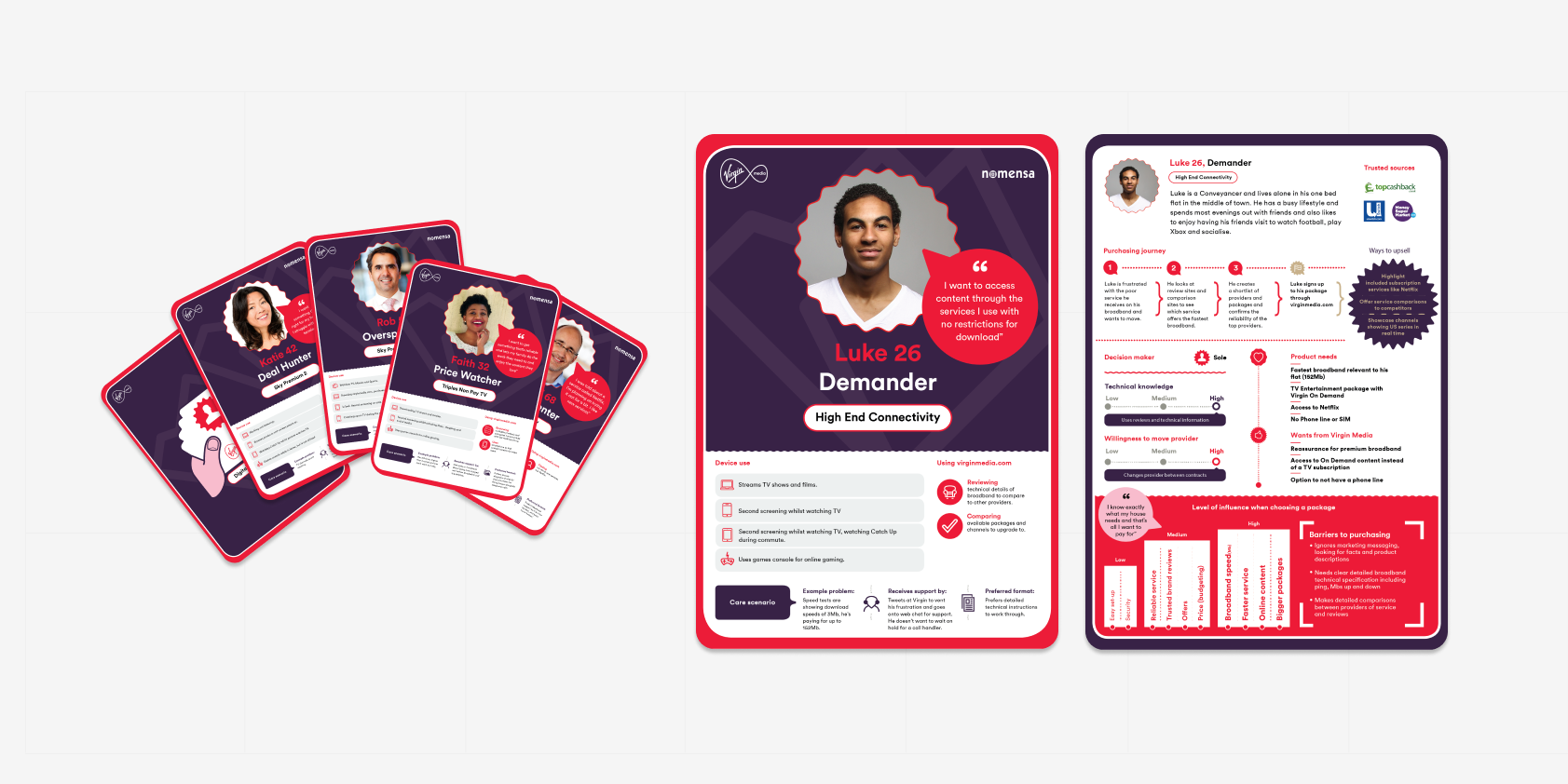
Who uses personas, and when?
Anyone in an organisation who is involved with user data can use and benefit from personas. These can range from product managers, to customer support specialists, to business stakeholders.
There are three typical scenarios that a broad range of roles can make better by bringing personas into the conversation.
1) User insights
This involves getting familiar with an organisation’s core user groups. This enables better understanding of insights that have surfaced from user research.
2) Improvement of processes and outputs
Leveraging carefully crafted personas can enhance processes and the overall quality of outputs. This applies to various domains such as products, communications, content, and marketing, among others. Employing a persona as a reliable reference point across diverse teams helps to maintain alignment despite numerous processes and outputs.
3) Communication of needs
Personas help insights to be absorbed by a varied audience and support keeping teams focused on the user’s needs. Sharing personas within an organisation, and fostering a shared understanding across departments, raises the likelihood of reaping the benefits that personas provide.
How do you develop a UX persona?
1) Research, research, research
A persona is only an imaginary reflection of your user groups if it isn’t based on real data. There are multiple ways to start gathering data on your users. While surveys are one way to capture data (often at reduced time and cost), very little can beat the richness of understanding achievable by speaking directly to users through interviews.
You’ll start to form a base understanding and begin identifying patterns after speaking to 10-15 people, this can sometime be more depending on the variety with your user groups. There will also be a point where you notice fewer insights forming, or repeated experiences, this is where you usually have enough data to start forming your personas.
Some useful things to consider when conducting research:
- Make use of any existing research or knowledge to inform your interviews
- If you struggle to get direct access to users, speaking to others who directly interact with them is another alternative
- Consider where you could take advantage of other data sources to support your interview data, such as web analytics and surveys
2) Divide (or segment) your data into user groups
It’s important to note that your data should not inform just one persona to represent your entire user base. Your personas should inform multiple user types with shared needs, behaviours and frustrations.
Begin by analysing your data, keeping in mind any behavioural traits you notice. Consider how different users may share traits in how they interact with a product or service, try to complete tasks, achieve goals, or experience problems.
You can quantify how many people sit against the different traits you have identified and begin to infer patterns. These patterns should form the foundation of your personas.
In most cases, you should aim to have three to five key persona ‘groupings’ at the end of your analysis. Being able to target this number will not only help keep the right amount of focus on your product or service’s objectives, but support multiple team members in keeping things clear and consistent without becoming overwhelmed.
3) Decide what key sections your persona will focus on
Personas can have different purposes depending on your product or service, and so the key sections (and information within them) should be selected for those purposes. For example, some may be most useful focusing on behavioural aspects while others may be best focused on demographic information. Personas are flexible – so you may include a mixture of these, or even change them over time as you discover new insights.
You can help decide the best combination of sections and information by bringing in multiple team members to help make those decisions. Once decided, it is best to agree a consistent layout to be used across all of your personas.
4) Don’t forget to add the human touch
A persona is nearly complete once it has a name, a face, and a line or two that captures what user group that persona embodies at a high level.
When choosing a name, it’s common to select a first and second name that is representative of the people you interviewed in that user group (but don’t use real names of any of the people you spoke to!). Alternatively, you can choose a thematic name for that persona, e.g. ‘Anxious Consumer’, which helps give an insight into your persona’s personality.
Avoid using photos of celebrities, anything overly artificial or pictures of real people you know. There are many sites that provide high-quality stock photos or images generated by AI. As an alternative, you can also use illustrations to bring your persona to life.
Lastly, provide a short summary that highlights key information that viewers of it can use to understand your persona easily. This information can also be reflected in the form of a quote which acts to drive empathy and be the voice of your persona, e.g. “Sometimes I feel anxious relying on technology to manage my banking”.
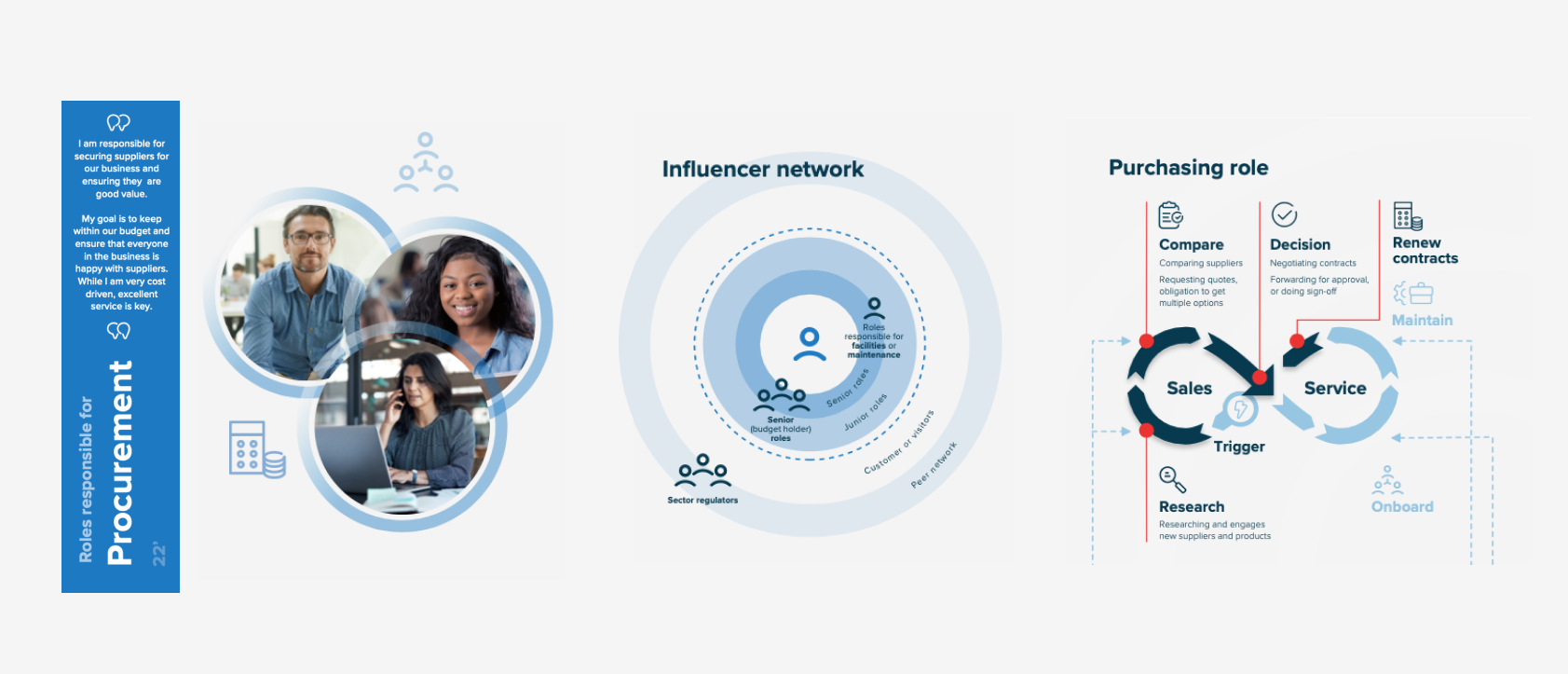
What do you do with personas once they’re ready?
1) Consider where they can best be put to use
Different roles, teams and stakeholders will benefit from personas in distinct ways. Before introducing your personas to the wider team, it is good to think about how you will talk about them and where their benefits can be maximised in relation to who will be using them.
2) Communicate them across your team and organisation
Give your personas visibility by introducing them to your team and organisation. Provide explanations about how different roles can use them to inform and improve their processes, outputs and day-to-day working.
3) Be aware that they will grow and change
Personas need to be periodically reviewed to ensure that the insights they communicate are still applicable to your product or service. Without these reviews, the work that is done around them may struggle to stay meaningful. You can adapt your personas over time using new research insights to reflect the journey of your product or service.
How can we help?
UX personas can be an incredibly valuable tool if developed and used correctly from the get-go. Nomensa’s practitioners are experienced at collaborating with a range of organisations to conduct research, analyse data and create engaging designs to bring personas to life. Get in touch today to learn more about how we can help.
We drive commercial value for our clients by creating experiences that engage and delight the people they touch.
Email us:
hello@nomensa.com
Call us:
+44 (0) 117 929 7333

